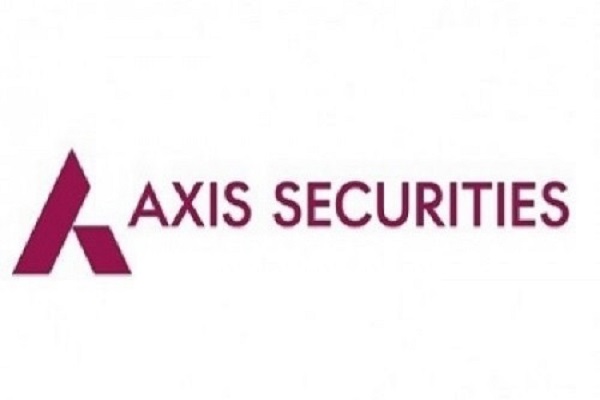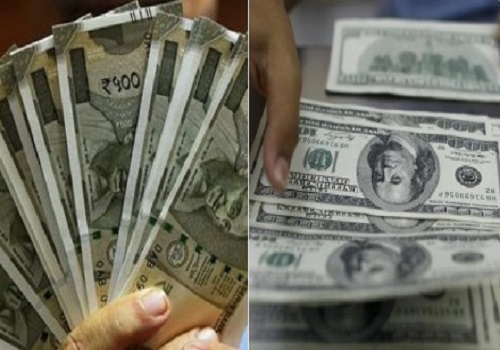Gold trading range for the day is 69410-71380 - Kedia Advisory

Gold
prices declined by 0.8% to settle at ?70,136, driven by profit booking following the release of the U.S. Consumer Price Index (CPI) report. The CPI rose by 0.2% in July, aligning with market expectations, and the headline inflation rate increased by 2.9% year-over-year, slightly below the anticipated 3.0% and June's 3.0% figure. This data reinforced the Federal Reserve's cautious stance on interest rates, with Atlanta Fed President Raphael Bostic emphasizing the need for more economic data before considering any rate cuts. In the global gold market, India's demand saw a modest rise due to price corrections, although volatility led some buyers to delay purchases. In China, premiums strengthened due to safe-haven buying, despite subdued retail sales of gold jewelry. The Chinese central bank did not increase its gold reserves for the third consecutive month in July. In other markets, Singapore and Hong Kong saw stable premiums, reflecting steady demand for bullion. Technically, the gold market is experiencing long liquidation, with open interest dropping by 2.96% to settle at 16,973 contracts. Prices are currently supported at ?69,770, with the potential to test ?69,410 if this support level is breached. On the upside, resistance is seen at ?70,755, and a move above this level could drive prices towards ?71,380. The overall market sentiment remains cautious, with traders closely monitoring economic indicators and central bank policies for further direction.
Trading Ideas:
*Gold trading range for the day is 69410-71380.
*Gold prices dropped on profit booking after US CPI report came broadly in line with expectations.
*US CPI rose 0.2% last month after June’s -0.1% decline.
Fed's Bostic says a 'little more data' needed to be ready to cut rates
Silver
prices declined by 1.22% yesterday, closing at ?80,061 as markets closely analyzed the latest U.S. inflation data for clues on the Federal Reserve’s future monetary policy decisions. The U.S. Consumer Price Index (CPI) for July showed a modest easing, with inflation dipping to 2.9%, slightly below the expected 3%. The core CPI, which excludes food and energy, also fell to a three-year low of 3.2%. Despite these softer inflation figures, persistent price pressures in shelter and transportation services have tempered expectations for a significant rate cut by the Federal Reserve in September. This adjustment in market sentiment has weakened the momentum for precious metals like silver, which are closely linked to interest rate expectations. Geopolitical tensions, including ongoing conflicts between Israel and its neighbors in Gaza and Lebanon, continue to support safe-haven assets like silver. Additionally, Australian miner Perth Mint reported a significant 91% surge in silver product sales in July, reaching 939,473 ounces, the highest level since February. U.S.-bound shipments accounted for the majority of these sales, highlighting the strong demand for silver in the U.S. market. In contrast, U.S. factory gate prices rose by a modest 0.1% in July, below the forecasted 0.2%, reflecting subdued inflationary pressures at the producer level. Technically, the silver market is under fresh selling pressure, with open interest rising by 1.67% to settle at 29,365 as prices dropped by ?988. Silver finds support at ?79,315, with a potential test of ?78,575 if the bearish trend continues. On the upside, resistance is anticipated at ?81,280, with a break above this level possibly pushing prices towards ?82,505.
Trading Ideas:
*Silver trading range for the day is 78575-82505.
*Silver dropped as markets assessed the latest price data for hints on Fed’s monetary policy outlook.
*Consumer inflation in the US eased to 2.9% in July, less than market expectations
*Fed Bowman said that despite softer inflation numbers for May and June, inflation remains uncomfortably above the FOMC’s 2% target.
Crude oil
prices fell by 1.65% to settle at ?6,487, pressured by an unexpected increase in U.S. crude oil inventories and concerns about weakening demand. The Energy Information Administration (EIA) reported a surprising rise of 1.357 million barrels in U.S. crude oil stocks for the week ending August 9, 2024, breaking a six-week trend of declines. This increase contradicted market expectations of a 2 million barrel decrease. However, stocks at the Cushing, Oklahoma delivery hub decreased significantly by 1.665 million barrels, offering some support to the market. The International Energy Agency (IEA) also contributed to the bearish sentiment by highlighting that inventory declines are expected to slow in the final quarter of the year. The IEA maintained its global oil demand growth forecast for 2024 but slightly lowered its 2025 estimate, citing the impact of reduced Chinese consumption. The report noted that the end of China’s post-COVID economic rebound is curbing global oil demand, though this is being partially offset by strong consumption in advanced economies, particularly in the United States, where the summer driving season is expected to be the strongest since the pandemic. OPEC's supply cuts are further tightening the market, though demand concerns persist. Technically, the crude oil market is under long liquidation, with open interest dropping by 43.36% to 4,564 contracts as prices declined by ?109. Crude oil is currently finding support at ?6,428, with the possibility of testing ?6,370 if this level is breached. On the upside, resistance is expected at ?6,592, with a move above potentially pushing prices towards ?6,698. The market remains cautious as traders navigate the mixed signals from inventory data and demand forecasts.
Trading Ideas:
*Crudeoil trading range for the day is 6370-6698.
*Crude oil dropped after the EIA reported an unexpected increase in US crude oil stocks.
*International Energy Agency's report indicated that inventory declines will slow in the final quarter
*Crude oil inventories in the US unexpectedly increased by 1.357 million barrels
Natural gas
prices surged by 3.31% yesterday, closing at ?187, driven by a combination of reduced output and forecasts of hotter weather in the latter half of August, which could elevate cooling demand and consequently boost gas consumption by power generators. LSEG projected 224 cooling degree days over the next two weeks, slightly lower than the previously estimated 233 CDDs but still significantly above the normal 186 CDDs for this time of year. This increased demand is expected to push average gas consumption in the Lower 48 U.S. states from 105.9 bcfd this week to 107.5 bcfd next week. On the supply side, natural gas output in the Lower 48 states has declined to an average of 102.6 bcfd in August, down from 103.4 bcfd in July, and well below the record high of 105.5 bcfd in December 2023. The U.S. EIA has also revised its forecast for natural gas production this year, projecting an average of 103.3 bcfd, slightly down from earlier estimates, citing record-low prices earlier in 2024 that led producers to cut back on output. Additionally, U.S. utilities added 21 Bcf of gas into storage during the week ending August 2, 2024, bringing total stockpiles to 3,270 Bcf. This is 248 Bcf higher than last year at the same time and 424 Bcf above the five-year average. Technically, the natural gas market is experiencing short covering, with a significant drop in open interest by 17.97% to settle at 33,699 as prices increased by ?6. Natural gas finds support at ?181, with a potential test of ?174.9 if the downtrend resumes. Resistance is expected at ?192.2, with a move above this level possibly pushing prices towards ?197.3.
Trading Ideas:
*Naturalgas trading range for the day is 174.9-197.3.
*Natural gas rose supported by a drop in output and forecasts of hotter weather for the second half of August.
*LSEG forecast average gas demand in the Lower 48 U.S. states, to rise from 105.9 bcfd this week to 107.5 bcfd next week.
*LSEG said gas output in the Lower 48 has fallen to an average of 102.6 bcfd so far in August, down from 103.4 bcfd in July.
Copper
prices edged down by 0.14% to settle at ?785.15, pressured by high metals inventories and disappointing economic data from China. The U.S. producer price index rose less than expected in July, indicating that inflation is continuing to moderate, which initially supported gains in the metals market. However, concerns about demand in top consumer China, where bank lending hit a 15-year low in July, weighed heavily on sentiment. This decline in credit demand has raised expectations for further easing measures from China's central bank, but it also highlights ongoing weakness in the country's economic recovery. In the global market, copper faced additional pressures from supply concerns. Workers at BHP's Escondida mine in Chile, the world's largest copper mine, have declared a strike after negotiations with the company collapsed, threatening a significant reduction in production. Meanwhile, Peru reported an 11.7% year-on-year drop in copper production for June, contributing to supply uncertainties. On the demand side, China's imports of unwrought copper fell by 2.9% in July compared to the previous year, reflecting subdued demand and high stock levels. Despite this, copper concentrate imports rose by 9.6%, indicating continued strong demand for raw materials. Technically, the copper market is under long liquidation, with open interest decreasing by 1.57% to 13,081 contracts as prices declined by ?1.10. Copper is currently finding support at ?781.5, with the potential to test ?777.8 if this level is breached. On the upside, resistance is expected at ?791, with a move above this level possibly pushing prices towards ?796.8.
Trading Ideas:
*Copper trading range for the day is 777.8-796.8.
*Copper dropped amid high metals inventories overall and disappointing China data.
*Workers at BHP's Escondida copper mine in Chile will go on strike after failing to reach an agreement with the company
*U.S. producer prices increased less than expected in July
Zinc
prices edged up by 0.49% yesterday, closing at ?257.15, as buying interest was driven by expectations of rising energy costs, which constitute a significant portion of zinc production expenses. The market sentiment was further supported by a decline in zinc inventories in Shanghai Futures Exchange-monitored warehouses, which fell by 8.5% from the previous week. Additionally, inflation data indicating that China is stepping back from deflation helped improve the mood across both equity and commodity markets. In the U.S., job growth slowed more than expected in July, with the unemployment rate climbing to 4.3%. This has raised concerns about a potential weakening in the labor market, which could expose the economy to recession risks. However, the disappointing jobs report fueled expectations of deeper interest rate cuts by the U.S. Federal Reserve, possibly starting in September, adding some bullish sentiment to the market. On the supply side, MMG Ltd’s announcement of a two-month mill stoppage at its Dugald River zinc mine in Australia is expected to tighten the already constrained zinc concentrates market. The global zinc market surplus fell to 8,300 metric tons in May, down from 15,300 tons in April, according to the International Lead and Zinc Study Group (ILZSG). China's refined zinc production in July also saw a significant decline, down 10.3% month-on-month and 11.15% year-on-year, primarily due to adverse weather conditions and maintenance activities across several regions. Technically, the zinc market is experiencing short covering, with open interest dropping by 14.68% to settle at 1,686 as prices increased by ?1.25. Zinc is finding support at ?254.9, with a potential test of ?252.5 if downward pressure resumes. On the upside, resistance is expected at ?260.2, with a move above this level potentially pushing prices towards ?263.1.
Trading Ideas:
*Zinc trading range for the day is 252.5-263.1.
*Zinc gains as buying was triggered by expectations of higher energy costs.
*Zinc inventories in warehouses monitored by the SHFE fell 8.5% from last Friday.
*U.S. jobs data eased fears of a growth slowdown in the United States
Aluminium
prices edged up by 0.14% to settle at ?216.35, supported by a tightening supply scenario and lower stock levels at key global locations. Notably, aluminium stocks at Japan's three major ports fell by 5.7% to 299,600 metric tons at the end of July, indicating a tighter market. Meanwhile, data from the London Metal Exchange (LME) revealed a shift in the origin of available aluminium stocks, with Russian-origin aluminium accounting for 65% of the stocks in July, up from 50% in June. In contrast, the share of Indian-origin aluminium in LME-approved warehouses dropped to 33% from 40%, reflecting significant outflows of Indian metal, which contributed to a 23% overall decline in on-warrant aluminium stocks on the LME. On a global scale, primary aluminium output in June increased by 3.2% year-on-year to 5.94 million metric tons, according to the International Aluminium Institute (IAI). For the first half of 2024, global production rose by 3.9% to 35.84 million metric tons, with China leading the growth at a 7% increase to 21.55 million metric tons. The aluminium market in Asia has also tightened, as reflected by a 16%-19% increase in premiums for shipments to Japanese buyers for the July-September quarter, now set at $172 per metric ton. Technically, the aluminium market is experiencing short covering, with open interest dropping by 6.06% to 3,691 contracts as prices gained ?0.30. Aluminium is currently finding support at ?214.9, with a potential test of ?213.5 if support levels are breached. On the upside, resistance is expected at ?218.3, and a move above this level could push prices towards ?220.3.
Trading Ideas:
*Aluminium trading range for the day is 213.5-220.3.
*Aluminium gains as Japan's July aluminium stocks fall 5.7% m/m
*Share of Russian aluminium in LME warehouses rose to 65% in July
*Primary aluminium output in June rose by 3.2% year-on-year to 5.94 million metric tons
Cottoncandy
prices edged down by 0.16% yesterday, settling at ?57,130, as profit booking set in after recent gains. The price increase was initially driven by concerns over reduced cotton acreage in the current kharif season, which is down by approximately 9% at 110.49 lakh hectares compared to 121.24 lakh hectares in the same period last year. The Cotton Association of India (CAI) projects the acreage to be around 113 lakh hectares this year, significantly lower than the previous year's 127 lakh hectares. The shift in acreage is attributed to cotton farmers opting for other crops due to lower yields and the high cost of production. The CAI President, Atul Ganatra, highlighted that the cotton balance sheet for next year’s opening stocks is expected to be tight due to higher exports to Bangladesh, which have surged from 15 lakh bales to 28 lakh bales. India’s cotton production and consumption for the 2023-24 season are both estimated at around 325 lakh bales. The gap of 15 lakh bales between exports and imports will reduce last year’s stock, creating a tighter supply situation. On the global front, the 2024/25 cotton balance sheet has seen reductions in production, consumption, and stocks. Global production is down by 2.6 million bales, primarily due to lower output in the United States and India, while global consumption has decreased by nearly 1 million bales. Technically, the Cottoncandy market is experiencing fresh selling pressure, with a 1.16% increase in open interest, while prices have declined by ?90. The market finds support at ?57,080, with a potential test of ?57,040 if the downtrend continues. Resistance is likely around ?57,180, with a move above possibly pushing prices towards ?57,240.
Trading Ideas:
*Cottoncandy trading range for the day is 57040-57240.
*Cotton dropped on profit booking after prices gained as Cotton acreage trails by 9% at 110 lh
*CAI predicts acreage to be around 113 lh this year, up from 127 lh in the previous year.
*Global cotton production cut by 2.6 million bales; lower in US, India.
*In the global 2024/25 cotton balance sheet, beginning stocks, production and consumption are increased.
Turmeric
prices declined by 0.8% to settle at ?15,914, pressured by limited demand as buyers remain hesitant to make purchases amid market uncertainty. Export opportunities are expected to face further challenges due to anticipated volatility in Bangladesh, contributing to the subdued market sentiment. Additionally, an increase in arrivals last week, driven by stockists offloading their stocks in anticipation of further price declines, added to the downward pressure. In Indonesia, dry weather conditions have accelerated harvesting, leading to peak levels of production. Many farmers have been selling their turmeric at the wet stage due to attractive prices, resulting in reduced production volumes. The combination of rising acreage and low export demand is likely to exert further pressure on prices. Reports indicate that turmeric sowing in key regions like Erode, Maharashtra, Telangana, and Andhra Pradesh has increased significantly compared to last year. Estimates suggest that turmeric was sown on about 3.75 to 4 lakh hectares this year, up from 3 to 3.25 lakh hectares last year. Despite the increased sowing, production in 2024 is estimated to be around 45 to 50 lakh bags, with an outstanding stock of 35 to 38 lakh bags. This could limit the downside as farmers are holding back stocks in anticipation of future price increases. Technically, the turmeric market is under long liquidation, with open interest decreasing by 1.54% to settle at 16,000 contracts as prices fell by ?128. Turmeric is currently finding support at ?15,772, with the potential to test ?15,628 if this level is breached. On the upside, resistance is expected at ?16,100, and a move above could push prices towards ?16,284. The market remains cautious as it balances increased production with potential demand fluctuations.
Trading Ideas:
*Turmeric trading range for the day is 15628-16284.
*Turmeric prices dropped as demand remains limited, as buyers are reluctant to make purchases.
*Pressure also seen amid news of increased sowing.
*In Indonesia, dry weather has accelerated harvesting, which is currently at peak levels.
*In Nizamabad, a major spot market, the price ended at 15956.1 Rupees dropped by -0.39 percent.
Jeera
prices declined by 1.09% yesterday, closing at ?25,345, as market participants reacted to expectations of higher production, which could exert downward pressure on prices. Despite this, the downside was somewhat limited due to robust domestic and export demand, coupled with tight global supplies. Farmers are also holding back their stocks, anticipating better prices in the future. The current season is expected to see a 30% increase in jeera production, reaching 8.5-9 lakh tonnes, primarily due to a substantial rise in the cultivation area. In Gujarat, the sowing area increased by 104%, while in Rajasthan, it rose by 16%. Globally, jeera production has surged, with China leading the way, nearly doubling its output to over 55-60 thousand tons. Similarly, production in Syria, Turkey, and Afghanistan has increased, contributing to a potential decline in cumin prices as these new supplies enter the market. Additionally, reduced export trade in cumin has added to the price pressure, reflecting a shift in global market dynamics. India's jeera exports during April-May 2024 rose by 43.50% to 58,943.84 tonnes compared to the same period in 2023. However, May 2024 exports saw a significant drop of 44.99% from April 2024, indicating some volatility in export performance. Technically, the jeera market is undergoing long liquidation, with a 2.96% drop in open interest to settle at 25,700 as prices fell by ?280. Jeera finds support at ?25,040, with a potential test of ?24,740 if the decline continues. On the upside, resistance is likely at ?25,670, with a move above possibly pushing prices towards ?26,000.
Trading Ideas:
*Jeera trading range for the day is 24740-26000.
*Jeera prices dropped as the expectation of higher production weigh on the prices.
*China's cumin output soared to over 55-60 thousand tons from the previous 28-30 thousand tons.
*Turkey anticipates producing 12-15 thousand tons, while Afghanistan's output could double.
*In Unjha, a major spot market, the price ended at 26072.75 Rupees gained by 0.06 percent.
Views express by all participants are for information & academic purpose only. Kindly read disclaimer before referring below views.





















